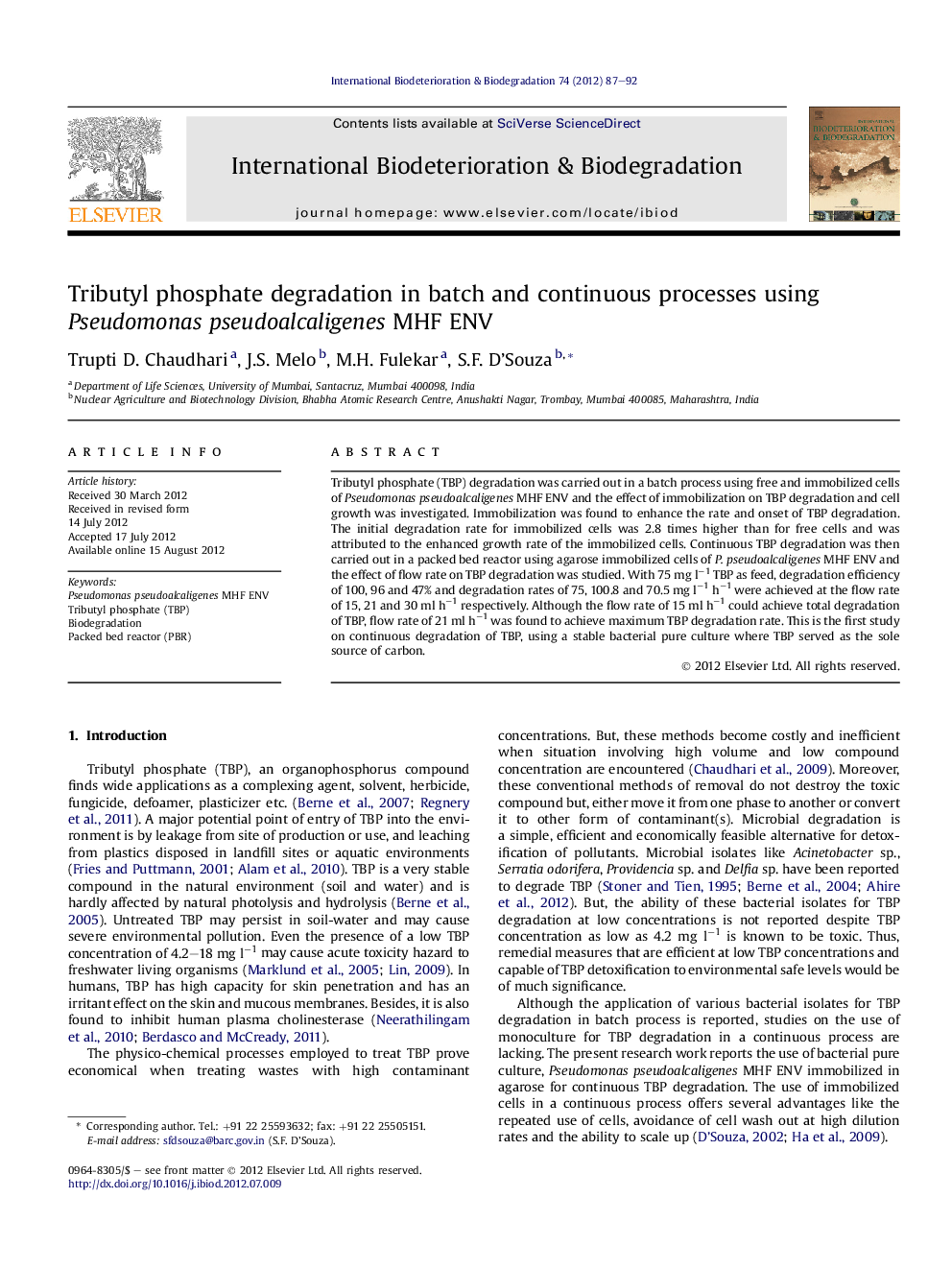| Article ID | Journal | Published Year | Pages | File Type |
|---|---|---|---|---|
| 4365083 | International Biodeterioration & Biodegradation | 2012 | 6 Pages |
Tributyl phosphate (TBP) degradation was carried out in a batch process using free and immobilized cells of Pseudomonas pseudoalcaligenes MHF ENV and the effect of immobilization on TBP degradation and cell growth was investigated. Immobilization was found to enhance the rate and onset of TBP degradation. The initial degradation rate for immobilized cells was 2.8 times higher than for free cells and was attributed to the enhanced growth rate of the immobilized cells. Continuous TBP degradation was then carried out in a packed bed reactor using agarose immobilized cells of P. pseudoalcaligenes MHF ENV and the effect of flow rate on TBP degradation was studied. With 75 mg l−1 TBP as feed, degradation efficiency of 100, 96 and 47% and degradation rates of 75, 100.8 and 70.5 mg l−1 h−1 were achieved at the flow rate of 15, 21 and 30 ml h−1 respectively. Although the flow rate of 15 ml h−1 could achieve total degradation of TBP, flow rate of 21 ml h−1 was found to achieve maximum TBP degradation rate. This is the first study on continuous degradation of TBP, using a stable bacterial pure culture where TBP served as the sole source of carbon.
► TBP degradation by our isolate did not exhibit a response threshold. ► Immobilization in ca-alginate enhanced the rate and onset of TBP degradation. ► Maximum TBP degradation rate in PBR was 100.8 mg/l/h at the flow rate of 21 ml/h ► First study reporting bacterial stability during continuous TBP degradation.
